Compression therapy is one form of restorative support that focuses on gently applying pressure to the toes, feet, ankles, and thighs.
There are many types of compression garments in the market, each having different intended purposes.
Specifically, compression wraps do a great job of compressing new injuries and reducing swelling.


Wearing compression wraps will help to protect wounds and quicken the healing process.
Read on to find out how you can benefit from compression wraps for legs!
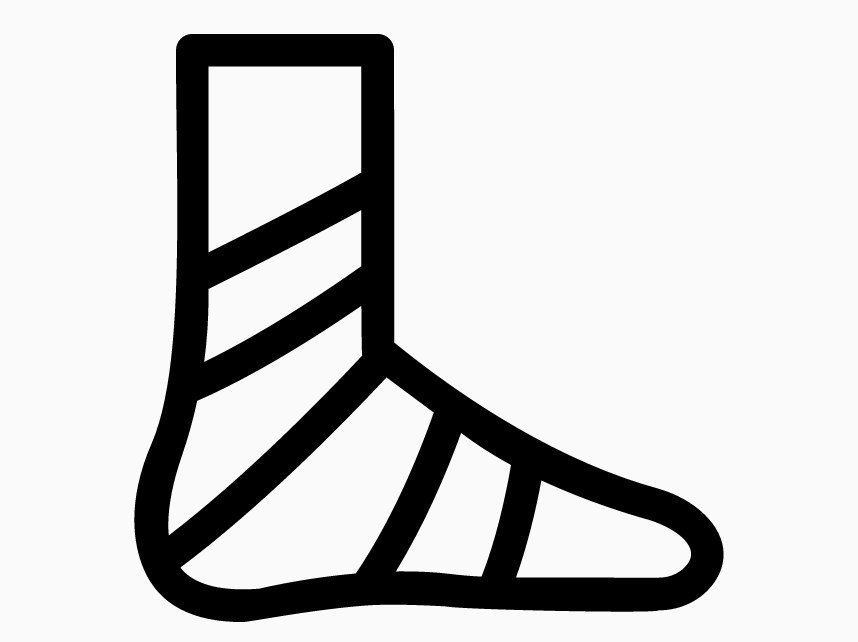
Compression Wraps
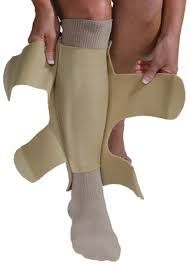
Compression wraps are compression alternatives that are meant for the lower extremities.
These wraps are often worn after completing a decongestive therapy or after CDT.
Wraps are also used during the maintenance or secondary phase of treating Lymphedema.
They are easy to use and provide a resting compression that is as steady as it is comfortable.
However, if you are active while wearing compression wraps, you should enjoy higher working compression.

Some people add them to their first aid kits to use as a staple during first aid procedures. These short stretch garments can take the place of the conventional bandages with multiple layers.
Some of these wraps come with fasteners that make wearing and adjusting them easy for any fluctuating body size and shape.
Just like other compression garments, compression wraps come in different compression ranges including 15-25, 20-30, 25-35, and 30-40 mmHg. They help to manage leg ulcers, poor circulation, lymphedema, and swelling.
Classification of Compression Wraps

Depending on the product of compression wraps you are using, you can apply compression wraps in one, two, three, or even four layers.
Some wraps even make provision for a padding layer with an outer layer in a rigid, elastic, or inelastic form.
Compression wraps are basically classified into two:
- Elastic or long stretch, and
- Inelastic or short stretch
Factors that Determine the Amount of Compression for Compression Wraps
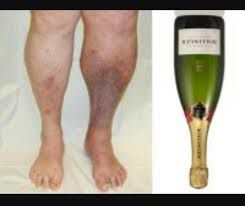
The goals of compression therapy include healing ulcer, reducing pain and edema, and preventing recurrence. Good wound care using compression wraps will help to heal most small venous ulcers in the shortest possible time.
Over time, the amount of compression that a wrap system produces is determined by the following factors:
- The wrap’s width.
- The tension or stretch of each wrap while it is being applied.
- The number of layers the wrap has.
- The elastic properties. For instance, a wrap applied at an overlap of 50% usually provides 2 wrap layers and higher compression.
- The size and curvature of your limb. This includes the ankle size and the leg’s abnormal curvature like very thin calves or champagne leg deformity.
- The type and amount of physical activity you engage yourself in.
Styles of Compression Wraps
A compression wrap is truly the best way to go when you find it hard to tolerate the conventional compression stockings. They offer dynamic compression for people with open ulcer, fragile skin, limbs that fluctuate in size or people with limbs that are unusually shaped.
These amazing wraps come in different styles, some of which are seen below:
Multilayered compression wraps
The aim of using multilayered compression wraps is to reduce and control edema or swelling in your legs. They also make sure there is no re-occurrence.
Multilayered compression wraps can be made of up to four layers. Your doctor is in the best position to decide how many layers will work best for your condition.
You may have to wear them for about a week, although there are cases that may require that you change them more often.
If the wrap is too bulky for your regular shoes, you may have to wear special footwear or larger shoes.

Ankle Compression Wraps
Compression wraps are very versatile garments, which offer different features that make them more effective and versatile. Some of them feature reversible designs with pull tabs, overlying straps, as well as special notches.
They are often indicated for medical conditions like lymphedema and wound care. Foot wraps come in different sizes, lengths, colors, and compression levels.
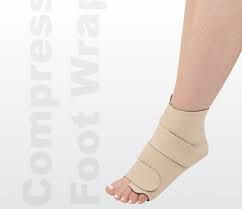
Calf Compression Wraps
This is another versatile style of compression wrap that usually has different features. Often indicated for treating lymphedema and for wound care, the application of these wraps is usually hassle free.
The stretch is often short with high working pressure. Sizes, lengths, and colors differ from one calf wrap to the other.
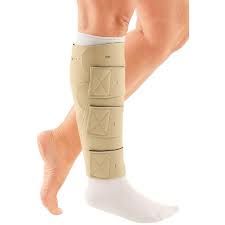
Knee Compression Wraps
Knee wraps are often used for treating mild to severe Lipedema as well as mild to severe Lymphedema. Quite effective and versatile, knee wraps feature different stretches and pull tabs. Some designs have notches that are capable of resisting bulk and gaping. You can get them in different sizes, colors, and lengths.
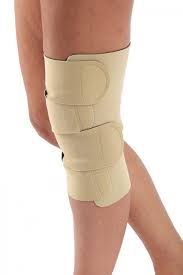
Thigh Compression Wraps
Cases of mild to severe Lymphedema and mild to severe Lipedema are easier to manage with thigh wraps. The compression is often high working pressure, with lengths that can cover the entire thigh area.
Some may have regular lengths that cover only some affected area.
There are many features that may come along with these wraps like reversible colors, short stretch, pull tab aids special notches, overlaying straps, reversible design, and pull tabs.

People Who Need to Wear Compression Wraps
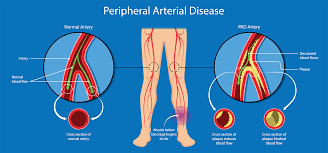
One of the best things about wearing leg compression wraps is that they are easy to apply. Since not all compression garments are for just anybody, here is a list of patients who should use compression wraps as an alternative:
- Patients who suffer from regular swelling fluctuation
- People who struggle to don traditional compression garments as a result of bad back, inability to bend, or weak hand strength
- Patients suffering from arterial disease, who find it difficult to tolerate compression levels that are constantly high
- People who have limbs with nonstandard shapes
- Patients with fragile skin or pain in their limbs that will worsen if they use traditional compression garments
Uses of Compression Wraps
People have found numerous uses for leg compression wraps. In addition to applying pressure to specific injury or areas of your lower extremities, they also help to reduce swelling.
In order to easily minimize leg swelling, these wraps prevent fluids from gathering at the site of the injury.
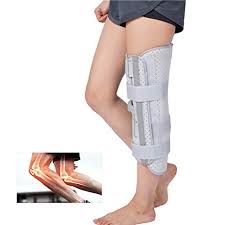
If, however, you are suffering from prolonged pain or your condition requires blood circulation management, you may need to use compression sleeves instead.
Here are some common conditions that you can use compression wraps for:

- Muscle strains
- Varicose veins
- Ankle or wrist sprains
- Swollen limbs
- Bruises or contusions
Donning Your Compression Wraps
Before donning your compression wraps, insert three of your fingers – the index finger, middle finger, and ring finger – between the straps.
If these three fingers do not have a comfortable fit, the straps may turn out to be too tight for you. It is advised that you first wear a clean liner before you wear your compression wrap.
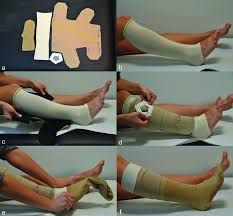
You can either sit or stand to apply your wrap. Stretch your legs out in front of you before donning the wrap. If you want full leg coverage, put on the knee unit last.
Use tension wraps to hold your dressings in place. Tension wraps can also provide adequate support for your joint.
When you want to remove most compression wraps, you may have to front each of the straps back. Afterwards, fasten the hook in order to prevent the wraps from getting tangled. This will make it easier for you to don the wraps some other time.
How to Use Wraps for Sprains and Injuries in the Lower Extremities
Compression wraps, unlike the conventional compression socks, are not pulled on. You attach them to you your leg with straps that come in Velcro style.
This design makes it easy to adjust the wraps at any time. You should follow some procedures to wrap your lower extremities properly.
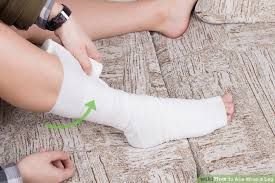
Procedure for Wrapping a Sprained Ankle
If, at some point, you sprain your ankle, it may begin to swell. In this case, your healthcare provider will tell you to wrap it in order to minimize the swelling.
More severe sprain, however, may require more stable support. In most cases though, a compression wrap will be appropriate for treating minor sprains.
Follow these steps to wrap your sprained ankle:
- Hold the sprained ankle at an angle of 90 degrees.
- Get your compression wraps and start wrapping from the area surrounding the ball of your foot and the arch. Wrap the area twice.
- While the wrap is at the top of your foot, circle it around your ankle, then cross it back to the opposite side of the foot.
- When doing this, use a figure-eight pattern, then wrap around the arch of your foot each time you pass around your ankle.
- After covering your ankle, secure the tip of the wrap in a place that will not disturb your skin.
- Ensure you have a taught wrap, but it should not be too tight.
Procedure for Wrapping an Injured Knee or Leg
A compression wrap can help when you have an injury on your knees or legs. After a knee surgery, your surgeon may prescribe compression wraps to hasten the healing process.
Different injuries to the shin, thigh and knee areas will require different compression techniques.
You will need to heed your doctor’s advice regarding the appropriate technique for your condition to avoid cutting off circulation and worsening your condition.
Procedure for Applying Multi-layered Compression Wraps

If you are using multi-layered wraps for your condition, you will have to wrap the area layer by layer in circles.
Start at the base of your toes and wrap upwards to the area just below your knee. The layers have to be wrapped in such a way that no skin will poke through.
You have to avoid having wrinkles in your wrap as this can pose a problem for your skin.
Precautions
You should call or visit your healthcare provider, wound center, or emergency room as soon as any of these happens:
- You notice your toes are swelling up
- Your wrap starts getting painful and uncomfortable
- When your legs or toes tingle or feel numb
- If bad smells start emanating from the wrap
- You notice that the temperature or color of your toes is changing
You should unroll your compression wraps with the round or blunt tip of scissors. Avoid using sharp scissors to remove your wraps.
How to Care for Your Compression Wraps

Your compression wraps have to be clean and dry at all times. Here are some tips that you need to know in order to properly take care of your wraps:
- Do not take your compression wraps into the tub or shower.
- If you are wearing compression wraps, you may have to do partial baths; you may want to use plastic protectors such as the ones used in covering casts. You can choose to use a large plastic bag that is closed at the top to cover the wrap and ensure water does not get in.
- Change your compression wrap when it starts to fall down or as soon as it gets wet.
- You should also change the wrap when your wound becomes visible through the wrap.
- To wash the compression wraps, it is recommended that you hand wash it, then air dry it. This will keep it looking great. If, however, you decide to machine wash it, you should use a gentle cycle, then set it on low heat to dry.
- If you want to wash it along with other clothes, place it in a pillowcase first. This is to make sure the Velcro contained in most compression wraps does not damage your clothes. It will also keep it free from lint.
Final Thoughts
It is paramount that wound centers or clinics have different types of wrap options in bulk to treat a large number of patients. Meanwhile, ensure your skin is well taken care of by using dressings with satisfactory exudate absorption.
Generally, you can apply leg compression wraps according to the manufacturer’s instructions and the tips provided in this article.
This page last updated November 5, 2022
